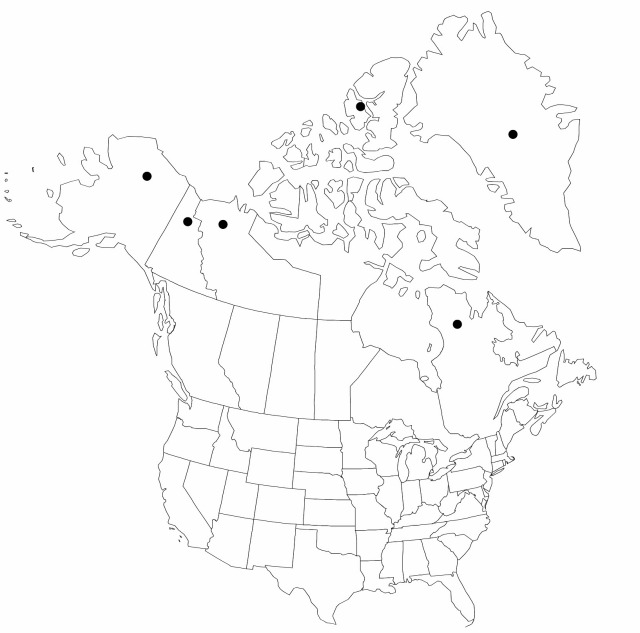Carex aquatilis var. minor
Ill. Carex, 163. 1867.
Culms 35–100 cm, angles scabrous. Leaves: basal sheaths leafless, usually red-brown; blades amphistomic, 5-8 mm wide, papillose on both surfaces. Inflorescences: peduncle of proximal spike not more than 4 cm; proximal bract longer than inflorescence, 4–8 mm wide. Spikes erect; proximal 3–4 spikes pistillate, 2–4 cm × 4–7 mm, base cuneate or attenuate; terminal 1–3 spikes staminate. Pistillate scales pale red-brown with narrow pale midvein. Perigynia obovoid, 2–3 × 1.2–2 mm, apex rounded; beak pale brown, not more than 0.2 mm, thickened. 2n = 76.
Phenology: Fruiting Jul–Aug.
Habitat: Wet tundra
Elevation: 0–600 m
Distribution

Greenland, N.W.T., Nunavut, Que., Yukon, Alaska.
Discussion
Although extensively intergrading along the Arctic coast, Carex aquatilis var. minor and var. aquatilis appear to be distinct; C. aquatilis var. minor has been reported to maintain its distinctive characteristics in cultivation (J. Cayouette and P. Morisset 1986b). It is reported to hybridize with C. bigelowii (= C. ×nearctica M. Raymond).
Selected References
None.